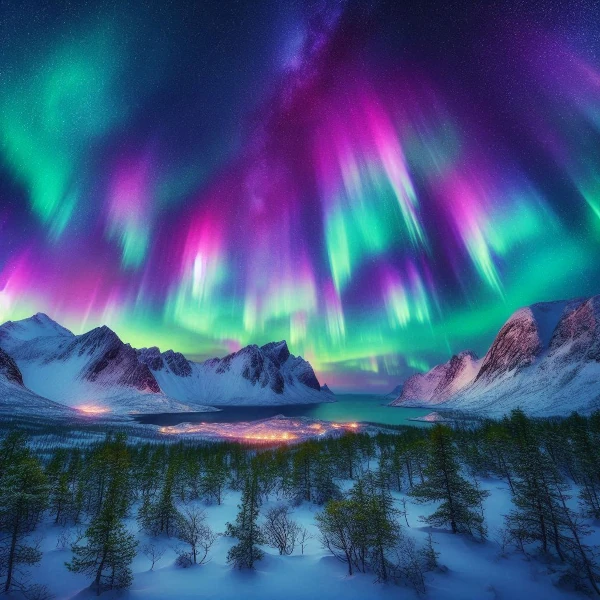
Image description: Natural phenomena such as northern lights, a storm, and a volcanic eruption in a single view. Image credit AI
The world around us is full of incredible phenomena that sometimes seem magical, but they can be explained by science. Let's discover some of the fascinating events that happen on Earth.
Have you ever seen a volcano erupt? Volcanoes are mountains that release lava, ash, and gases from the center of the Earth. When a volcano erupts, hot lava bursts from the crater and flows down the slopes. Although it's dangerous, it's also a beautiful sight to see from a distance.
The northern lights, also called the "aurora borealis," are colorful lights that dance in the night sky. They appear near the Earth's North and South Poles. These lights are created by the solar wind interacting with the gases in Earth's atmosphere. The lights can be green, pink, purple, and sometimes even red. It's a magical display!
Lightning is an electrical discharge that crosses the sky during a storm. When clouds rub against each other, they create electricity. This electricity is released as lightning. The thunder you hear afterward is the sound made when the air heats up and cools down quickly because of the lightning.
Have you ever seen a rainbow after the rain? Rainbows appear when sunlight passes through raindrops in the air. The light is broken into all the colors of the rainbow: red, orange, yellow, green, blue, indigo, and violet. That's why rainbows are so colorful!
Tsunamis are large waves that happen after an earthquake under the ocean. These waves can be gigantic and move very fast. Tsunamis are very powerful and can cause a lot of damage when they reach the shore, but they also remind us of the impressive force of the oceans.
Just like the northern lights in the North Pole, there are "aurora australis" at the South Pole. They work the same way, lighting up the sky with spectacular colors when particles from the solar wind meet gases in the atmosphere.
Nature is full of extraordinary phenomena that capture our imagination. Behind each of these events is a fascinating scientific explanation. The next time you see lightning, a rainbow, or an aurora, think about the science at work creating these wonders!